We offer free shipping to the US on all orders $35 and up. For all other orders, we offer $5 flat rate shipping.
We ship using FedEx Express (2 business days from order shipment date) and FedEx Ground (3-5 business days from order shipment date).
| Order Subtotal | Shipping Charge | |
| Standard Shipping | Expedited Shipping | |
| $0 - $34.99 | $5 | $15 |
| $35 - $74.99 | Free | $10 |
| $75+ | Free | Free |
We are currently unable to ship to P.O. boxes. Orders to APO/FPO addresses and U.S. territories ship via USPS with 10-15 day shipping or faster.
-
Free shipping on all orders over $35 in the US!Shipping to the US
We offer free shipping to the US on all orders $35 and up. For all other orders, we offer $5 flat rate shipping.
We ship using FedEx Express (2 business days from order shipment date) and FedEx Ground (3-5 business days from order shipment date).
Order Subtotal Shipping Charge Standard Shipping Expedited Shipping $0 - $34.99 $5 $15 $35 - $74.99 Free $10 $75+ Free Free We are currently unable to ship to P.O. boxes. Orders to APO/FPO addresses and U.S. territories ship via USPS with 10-15 day shipping or faster.
- Ship To: | EN
-
Contact Us

Our customer service team in the US is ready to assist you.
Monday - Friday
7 AM – 4 PM PTSaturday
7 AM – 4 PM PT
- Login
- Join
- Your Bag 0
- Terms of Service
- Privacy Policy
- Copyright Policy
- Cookie Policy
- Accessibility
- Do Not Sell or Share My Personal Information
- © 2025 Beautylish, Inc. All rights reserved.






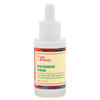

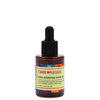
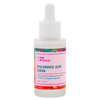
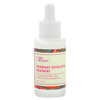
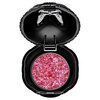
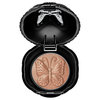
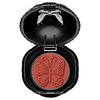

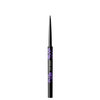
Jul 12, 2015
taelor h.
Jul 12, 2015
Claire D.
thanks!!
Jul 12, 2015
taelor h.
Jul 12, 2015
Camillia N.
Omg I'm downloading asap. thanks girl.
Jul 12, 2015
Erin L.
Thanks that's awesome
Jul 12, 2015
Brittany F.
That's actually so cool, especially for those into vegan/ paraben free makeup or sensitive skin. Thanks for sharing :)
Jul 12, 2015
Lydia B.
I am downloading! :) thanks.
Jul 12, 2015
Chris M.
Sounds great and thank you...the reviews were not that great, however. Bummer!
Jul 12, 2015
EsotericOdium Q.
Oh nice. Will look into. Thank you Miss Taelor.
Jul 12, 2015
Hannah K.
So annoyed that this is unavailable on Android, but there's one called Skin Deep which looks really good :)
Jul 12, 2015
taelor h.
@ Brittany F. That's exactly why I was searching.😂 that's all me. Hahah.
But you guys Are so welcome, I thought it was far too cool not to share.!(: but @hannah k. Awe, I'm sorry.! Let me know how that one works as well.! (:
Jul 12, 2015
Diana T.
Does it tell what it's basis is for what they consider good or bad?
Jul 12, 2015
Naomi K.
I got it! I found wet n wild products are very bad compared to other drugstore brands.
Jul 12, 2015
Nicole A.
I have android too):
Jul 12, 2015
Nina M.
Thanks!!
Jul 12, 2015
Emily W.
What are their sources? Who are the developers? What makes an ingredient "good" or "bad"?
For example, parabens are common preservatives used in products to stabilize formulas and extend shelf life. They are inert, and are generally regarded as safe by published empirical studies. Yet, that app has two parabens flagged for concern. Why?
Another example: dimethicone is a type of silicone that can cause pore obstruction in those with acnegenic skin. Surely that would warrant at least a yellow marker? Or is the concentration so low that the impact is considered negligible?
Without knowing the criteria on which these items are ranked, this app seems slightly suspect. I am wary of all of these apps that promise to evaluate ingredients like this (especially that farce promoted by EWG) because most of the time it is just more pseudoscience and chemical fear mongering.
Jul 12, 2015
Stephanie G.
If you're trying to avoid chemicals or certain allergies--this is great. But to go along with what Emily said, be careful when it comes to things like sunscreen. I noticed Skin Deep lists several sunscreens as bad. That is very troubling. Sunscreen, for example, contains things that some believe might possibly be "bad" chemicals but protects one from sunburns and blocks
UVA rays---which are 100% undeniably without any doubt whatsoever linked to cancer. Just keep that in mind.
Jul 12, 2015
Diana T.
I do agree with Emily in that I would like to know their basis for "good" vs "bad" and there are other websites that are a bit more thorough in their explanation of ingredients like cosdna.com - that is my go to website for product ingredient analysis
Jul 12, 2015
Alyx T.
Emily is right. This app really has no correct sources, and when I had it, it was very unreliable on ingredients. For example a cheap shampoo with no sulfates, no bad chemicals really was rated very toxic, whereas a high end salon shampoo with sulfates, I know it had lots of potentially dangerous chemicals in it got great ratings.
It also rated my literally made of vegetables and no chemical conditioner hair dye as toxic and told me I should highly stay away from it. Even though it is literally pigment from vegetables and conditioner, it would say the product was bad.
It would also say on one thing that an ingredient was like a 9, but on another product with the same ingredient it would label it as a 2.
Jul 12, 2015
Emma H.
I agree with Alyx and Emily and the girls. This app is a great idea, not so great sources.
Jul 13, 2015
Viva D.
I have had this app for about a year now, and I would say that it does help give you a general outlook of what brands use in their products. For example it is accurate with let's say neutrogena whose mascara has a Dna mutating property in it. It's sources are the EWG database and others, they actually list it when you click on the ingredients to see why it's bad (or good). But like always, I think it's up to your judgement Bc there will always be inaccuracies with almost every app, so I don't really go by it to the point, but I like to know to stay away from brands that are consistent 7 and higher. It also shines light on the fact that there are pretty much no regulations in the makeup industry so any brand can claim they are "natural" and organic, an example would be lush, where half their products are nines. Also in recent studies parabens have been proven to be hormone disrupters which can most certainly lead to serious illnesses. So many lipsticks have lead in them, the You.S has allowed face creams with Mercury to be imported. I firmly believe to (if this is really important to you, as it is to me) to go to many reputable websites and research as much as you can. And yes I have noticed that for example if a lipstick is a different color it will have a much different rating even if it is the same formula (which is strange) but I think this app is a good start in the right direction :)
Jul 13, 2015
Viva D.
United States (not you.S)
Jul 13, 2015
Shreya S.
Thanks for sharing! I just downloaded it :)
Jul 13, 2015
Emily W.
I have never seen a reputable scientific study that shows that parabens are dangerous, would you mind sharing your sources Viva? I'm highly interested. Also, lead and other heavy metals are present naturally in thousands of products, including foods, in concentrations too low to EVER be a concern for consumers. This "dangerous lead in lipsticks!" myth has been a scare tactic used by advertisers for decades to sell lipsticks marketed as "all natural" and "organic" and other buzzwords, which are loosely regulated jargon that have little bearing on final product formulas.
Lipsticks and eyeshadows will have different safety ratings between colors because the pigments used vary in skin safety. Certain reds are irritants under different conditions. Many blues and greens are not lip safe. Some oranges are not eye safe. Some glitters can be used on the body but not on the eyes, et cetera.
Importation on products is a completely different animal, as consumers can freely import cosmetics and these are not subject to any US regulation of ingredients whatsoever.
Jul 13, 2015
Viva D.
Http://www.medscape.com/viewarticle/780590_6
http://www.livestrong.com/article/194949-what-are-the-side-effects-of-parabens/#page=2
http://www2.epa.gov/lead/learn-about-lead
Also, even though the FDA might approve them as safe, I don't really trust the FDA seeing say that they banned vitamins at one point in time and are still trying to do so today. Honestly, chemicals and metals can be defended but I am going to be on the safe side and find the makeup with the least amount of chemicals, just to be on the safe side... Because why take a risk? I respect your opinion, and agree with you how the industry does loosely throw around the terms organic and natural, but please respect my opinion in that I would rather be safe than sorry. This topic has been a debate for a long time and unfortunately I don't think we will have the answer for quite some time to come :(